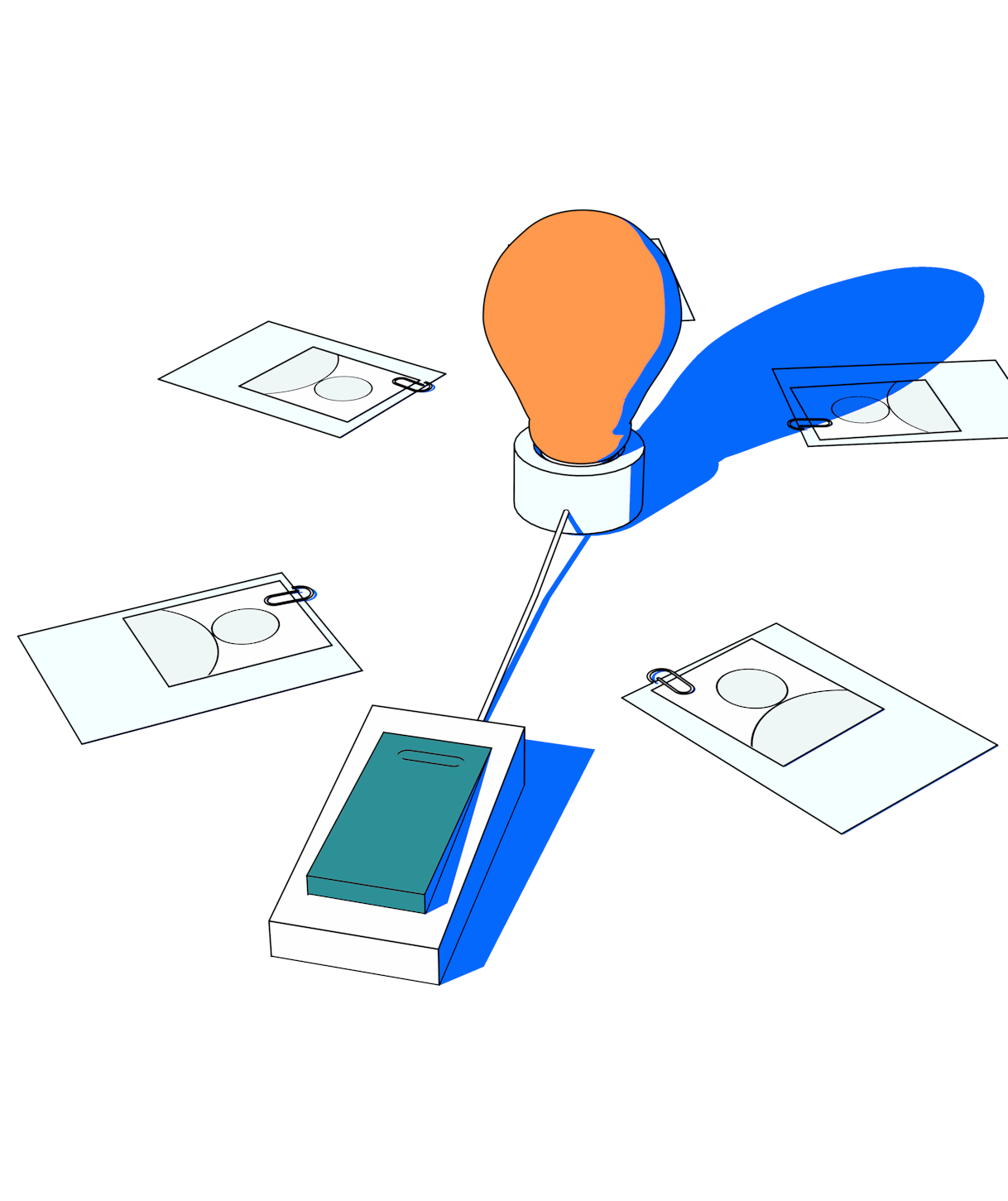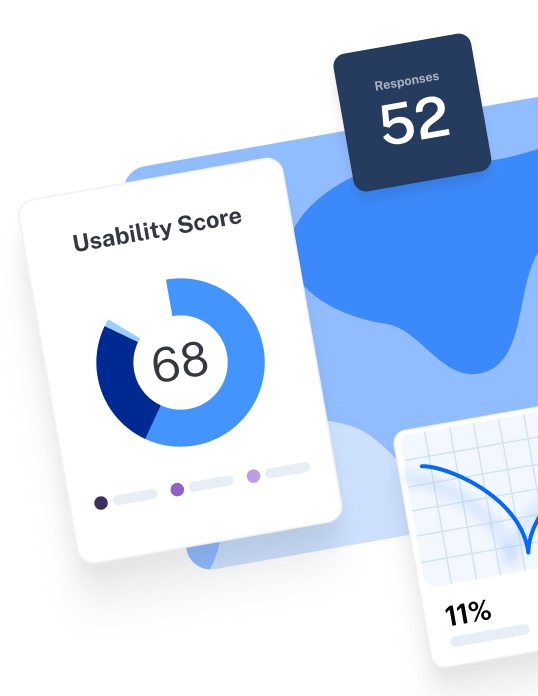Product teams are challenged to make decisions daily, yet how they make these decisions often separates the best from the rest. While more and more product organizations understand the importance of research in building successful products, when it comes down to it, 60% of product teams connect with customers once per month or less than monthly—even though they’re making decisions daily.
Every company should conduct some level of research to ensure decisions are informed by customer input. But the impediment to that is often a reluctance from upper management or stakeholders to invest in research in the first place. If you’re reading this, you probably often find yourself arguing for the need to do more research or are wondering how to start having that conversation with your team. If that’s the case—this article is for you.
I’ll provide a step-by-step guide on evangelizing research within your organization and share real-world examples of research being an indispensable part of product success.
The cost of NOT doing research
Let’s get the biggest argument against research out of the way first: yes, research takes time and resources. It’s not something that can or should be done without care and investment. But the cost of not doing research is often way higher—resulting in poorly built solutions, unsuccessful products, and a waste of design and development time. For instance, IBM found that the cost of fixing an error after development is up to 100 times more expensive than during development.
Without research, you're more or less running on instinct. You can't know for sure what problems are worth solving and how best to solve them. From both tactical and strategic points of view, research plays a critical role in building successful products and experiences.
Danny Williams
Sr. Product Designer @ Shopify
Share
There are other examples of why research is necessary. Let’s look at some of them together:
The $300 million button
You read that right: $300 MILLION. In what is potentially the biggest argument for usability testing, Jared Spool reported an astronomical improvement to an eCommerce site after he and his team conducted usability tests on the checkout experience.
They found that buyers—repeat and new—got stuck while logging into their accounts. 75% of those who forgot their login information abandoned the checkout process altogether, resulting in a lot of missed revenue.
The team changed the label on the button and removed the necessity to log in or register to purchase. As a result, the company saw an additional $300 million in revenue in the first year—a great example of the ROI of research.
Gender bias puts people at risk
A study conducted in 2019 found that as a result of testing limitations, women are 17% more likely to be killed in a car accident and 73% more likely to be seriously injured.
These limitations occur because of the crash-test dummy that is used to evaluate the safety of vehicles in accidents. Even though researchers have known since 1980 that male and female bodies perform differently in car crashes, the dimensions of the crash-test dummy used to test vehicle safety still reflects a male body. This example highlights the importance of eliminating bias by considering a represented sample of your customers and not relying on your own experiences to inform decisions.
Investing in research eliminates biases that everyone has—but which are even more important to be aware of when designing and building products.
Share
Caroline Criado Perez’s book, Invisible Women, outlines the many other biases that tend to favor male experiences. Investing in research eliminates biases that everyone has—but which are even more important to be aware of when designing and building products.
Not doing research wastes so.much.time
In my very first research job, I saw this happen firsthand. The team had been building software for a user group working in emergency healthcare, so it was essential that what we created was reliable and trustworthy. Before joining the team, I heard that the project had been in the works for seven to 10 years. It wasn’t until I joined that we prioritized usability testing.
From the usability tests, we found that people didn’t trust the new system and reported that they would feel safer relying on their old process—pen and paper and a lot of mental gymnastics. I left the company before knowing the project’s outcome and if it ever launched, but this is an example of why it’s essential to talk to your customers early on and iterate on the product together. Early research can help you and your team avoid building a product that no one wants or is going to buy.
User research is a compass that directs you toward what to focus on next to make your product better and enables you to quickly change the route if your solution is not the best one.
Tiphanny Cadée
Sr. Product Designer @ Rakuten Kobo
Share
Research helps you scope out projects and plan the roadmap
Research can also help teams understand where they should be investing their time and how. It’s impossible to work on all parts of a product at once, so research will help you draft a defined scope and product roadmap based on customer data.
By speaking to your customers, you will gain a better understanding of what problems are the highest priority and how you might go about solving them. Here’s Harry Hutten, Lead Product Designer at Rakuten Kobo, about how research helped the team define their next version of the product:
Research allowed us to break down the problem so we could rapidly prototype and test ideas. It took us from an ill-defined problem to a practical foundation for the future of our product.
Harry Hutton
Lead Product Designer @ Rakuten Kobo
Share
These examples all highlight concrete reasons for investing in research and what happens when research is not prioritized as part of product development. There are several excuses out there to not do research, but there’s also a lot of evidence as to why you should.
If you’re just getting started with research, below are a few easy tips and workarounds to incorporate research into your company’s process. These tips are not a substitute for proper research—but they will help you get started and avoid major failures.
4 quick ways to start doing your own research
The best way to convince people that research is necessary is to show them in the context of your own products. So here’s a few ideas for getting started with research in your organization.
1. Test internally
If you can’t share new mockups with customers or external testers, you can test internally with people from your own company. Although it’s not recommended to use team members as the only tester group, it’s still better than testing with no one.
One caveat: don’t test with the R&D team. Instead, test with departments that haven’t been exposed to the product before.
2. Test with friends and family
Again, if you don’t have much time or a budget to do a full research study, ask your friends if they'd be willing to help you out.
If you uncover compelling insights this way, it may help you convince stakeholders that research is worth it. Expect there to be some bias in your results as you’re testing with people you know, or perhaps not with the audience the product is intended for.
Pro tip: If more than one person is conducting research, swap your participants between you. This will randomize the results and reduce bias.
3. Use lo-fi mockups
Creating a fully functioning, high-fidelity prototype takes a lot of time. Sometimes, this is necessary to test the product before releasing it.
However, if you’re pressed for time or trying to make a case for research, using low-fi mockups also work. These prototypes could be as low-fi as using paper to represent your app or website before moving on to creating the digital version.
The key thing to remember here is that you won’t be testing the product or the experience entirely, so the data you gather will be incomplete, but again—testing something is better than nothing.
4. Do unmoderated remote testing
Unmoderated remote testing is a great option when resources and time are sparse. You can set up a test, launch it to your customers, and get the results without having someone present for all the sessions.
Unmoderated tests remove the difficulty of finding time slots that work for two or more people, and enable participants to complete sessions when it’s most convenient for them.
How to evangelize research in your organization
Now that you have a few ideas on how to get started with research, you will need to slowly start showcasing the value of research to your team to get buy-in for more research down the line.
Below you’ll find ways to evangelize research in your organization and get you on the right path for running more of it 🙌
Adopt a collaborative approach
I first came across the idea that 'Research is a team sport' early in my career and wasn’t sure what it meant or how to be the “coach” of said “sport”. However, after more practice and exposure, I realized that what this quote referred to was making my process collaborative.
Research is most successful when everyone who will benefit from the results is involved in the process.
Share
Through practice, I understood that research is most successful when everyone who will benefit from the result is involved in the process. A collaborative approach helps you build a better research plan, ensure you’re asking the right questions, helps others in the organization get closer to customers, and provides indisputable evidence for why we should involve customers in the first place.
So, a key part of evangelizing research and creating a user-centered culture is exposing stakeholders to any research you’re doing, and as a result—the return on investment research can yield. Regardless of your role at the company, you can be the one to drive this initiative to help others see the value of doing research.
“We did six [research] sessions, but it only took the team one session to convince them to tackle the technical constraints we were designing around, so we could drastically simplify the UX. All the participants except one had a hard time understanding why what we were designing was necessary, and turns out—it wasn’t.”
Mark Dumschat
Content Designer @ Shopify
Share
Here’s a few ideas on how to make your process more collaborative:
1. Get others involved in planning
One common reason people are skeptical of research is not that they flat out dislike it but because they don't know enough about what it can do for them (more on this later). So, it helps to give people involved in a project an opportunity to share what questions they're currently grappling with and how research can help answer them.
An effective way to do this is by hosting a meeting for everyone to share what they're trying to learn and talk openly about their assumptions about the problem space. It gets everyone working together and reveals similarities and differences across disciplines.
By getting people involved in the planning phase, they will better understand what research is and how it's done. This also provides you with a great starting point for the research plan.
2. Create and share your research plan
Once you’ve considered all the feedback from your stakeholders and formulated your research plan, it’s a great idea to share this plan back with those who were involved in the first step.
Again, this helps educate others about what you'll actually be doing and what the research will help uncover. The most straightforward way to do this is by sharing a Google Doc with your plan and encouraging others to leave comments and ask questions. Then, you can follow up with each person directly and make amendments, if necessary.
3. Invite observers and note-takers
This is really where the shift in the value of research starts to happen✨! Once you’re ready to get going and start scheduling sessions, it’s helpful to let your team know that you’re at this stage and get them involved. This part is most compelling when showcasing the value of research as stakeholders start observing customers or see the results come in real-time in the case of unmoderated sessions.
This stage is crucial because customers will most likely always share something new that the team hasn't previously considered.
4. Host a synthesis workshop with others involved
Not only is it great to involve your team in taking notes and observing, but it can also be really fun and informative to ask those people to join you in a synthesis workshop. Rather than leaving it up to you to pull the insights and try to convince people of them, you can involve them in this process so they can see for themselves what your customers said and the pain points they're experiencing with the product.
Hosting a synthesis workshop exposes your team to the raw data and it also helps you form some allies when the time comes to share the results with the entire team. It’s a wonderful feeling when another co-worker can jump in and speak to a question about the research because it shows the team that others are involved in the process—and that's how research becomes a team sport!
5. Provide insights as patterns start to emerge
Once the sessions actually kick off, it may feel like there's silence until you come back to share the final results. To keep people excited about the research and make them feel more involved, share video snippets from interviews or comments from surveys via Slack as insights start to roll in.
Preface these share-outs with a note that these insights are early, and shouldn't be used to inform any decisions just yet. It can be really exciting for someone if their hypothesis is supported by a quote or video clip, but it’s important to wait for the final synthesis before the team moves forward with solutions. It’s also highly advised that you only share snippets of information that are starting to form a theme across the results, and isn't just one snippet from a participant.
6. Share the results for maximum impact
It may seem obvious that you would share your research results with your team, but what does sharing actually mean? It's so easy to write up a one-page report or put together a quick Google Deck, send it off into the Slack abyss, and hope that people read it—but that doesn't really work.
To help keep the research hype and momentum going, provide recommendations to specific teams or disciplines within your deck or report and tag the stakeholders involved, so they know exactly where you want them to look. Spread your findings across the company as much as possible, especially when you're trying to get buy-in to do more research.
Another way to ensure people use your work is to schedule a 30-60 minute meeting with the entire team to walk them through the results.
Lastly, follow up with anyone who is going to benefit from your results. For example, if there's an upcoming design sprint or strategy meeting, ask to be invited or schedule a 1:1 with the key stakeholders. Being able to make direct correlations between your findings and changes being made in the product will help you a lot if you ever have to face a skeptic or defend the benefit of research again.
Educate people on the value of research
Another key reason why people are skeptical of research is because they don't know much about it and its impact.
Sharing resources during a Lunch & Learn or in some other group meeting will help educate those who are unsure of the value of research. I love sharing the example of the Norman Doors as it's an easy way to explain the value of research to non-researchers and get the point across.
Another point to bring to anyone who is unsure about research is that the more we work on the same product area, the more we become blind to problems and possibilities. David Foster Wallace provides us with a terrific example during "This is Water," his 2005 commencement speech:
“Two young fish are swimming along and they happen to meet an older fish swimming the other way, the older fish nods at them and says ‘Morning, boys. How’s the water?’ The two young fish swim away and eventually one says to the other ‘What the hell is water?’”
We're so accustomed to our environment and surroundings that we become blind to the things that others see. In the case of research, we absolutely need to do it because otherwise, we would create solutions for the things we believe to be important and miss the real opportunities.
When research is not a priority, we as designers are left to make assumptions about the problems we are trying to solve. Designers are not omniscient beings that hold all the answers. Research sets us up for success by allowing us to make informed decisions when designing.
Miguel Hernandez
UX Designer
Share
Remember everyone is on the same team
Lastly, when you find yourself in the position of having to explain why research is necessary or trying to get other disciplines involved, remember that everyone on your team has the same goal—to provide the best experience to customers.
We hope this guide has offered you the tools you need to be the champion of research in your organization. Start by bringing people into the research process, educating them more on what research does, and reminding them that everyone is on the same team.









